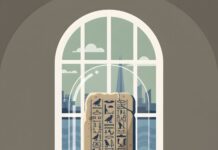Ancient temples in Lebanon deserve to be known for their beauty, not the conflicts that keep them from peace.
A Country Known for Conflict, Rich in Culture
Recent violence in the south has once again brought the country into the headlines for the wrong reasons, as civilian areas were hit and international observers called for restraint.
Lebanon appears in world news too often for its crises instead of the heritage that defines its character.
Stones that Outlast Empires
Three years ago, I stood beneath the columns of Baalbek, a site that has witnessed empires rise and fall.
The Temple of Jupiter’s remaining pillars rise more than twenty metres high, and the complex, listed as a UNESCO World Heritage site since 1984, also includes the remarkably preserved Temple of Bacchus. Sunlight filters through stone carved nearly two thousand years ago, a reminder of how craftsmanship and faith once built monuments that still inspire awe.
Baalbek has endured much: the Lebanese Civil War, bombings, and the more recent clashes that again put its heritage at risk.
In 2024, the historic Hotel Palmyra was damaged, prompting UNESCO to extend extra protection to 34 cultural sites across the country. These temples have survived earthquakes, invasions, and centuries of neglect, yet they remain among the best-preserved examples of Roman architecture anywhere.
A Long Held Treasure
Writers and travelers have long celebrated them.
Mark Twain once wrote that Baalbek’s design “had not been matched in any human work built within twenty centuries.” The Temple of Bacchus, with its carved reliefs and near-perfect preservation, still feels alive.
Columns from the Byzantine period were later reused in the Hagia Sophia in Istanbul, showing how Lebanon’s influence reached beyond its borders.
Heritage and Humanity
Lebanon’s diversity is reflected not only in its history but also in its people.
Churches and mosques often stand side by side, much like the cedar and the stone, two symbols of endurance sharing the same soil. The cedar, a national emblem and one of the world’s oldest tree species, represents strength and continuity.
Across the country, other UNESCO World Heritage sites tell the broader story of civilization: Byblos, Jeita Grotto, Qadisha Valley, Tyre, and Anjar.
Tourism recovered after the civil war, bringing festivals, orchestras, and travelers back to Baalbek. Even amid economic hardship, Lebanese hospitality endures. Guides, artists, and families protect their heritage and welcome visitors with generosity and pride.
Today, more than 80,000 people remain displaced in Lebanon, many unable to return home. The United Nations has verified over a hundred civilian deaths since the ceasefire, including children and elders. Behind these numbers are ordinary lives: shopkeepers, students, and farmers who deserve stability and peace.
The determination to protect ancient stones shows that Lebanon’s story is not only one of conflict but of resilience and creativity. From these shores, the Mediterranean once connected civilizations through trade and art, linking Lebanon to places like my own country on the other side of the sea. The columns of Jupiter and the cedar of Lebanon remind us that beauty and endurance can outlast any war.
What this country truly deserves are headlines about its wonders, not its wounds.
Keep up with Daily Euro Times for more updates!
Read also:
Shattered Ceasefire: Lebanon Reports Hundreds of Israeli Breaches
Lebanon’s New Government Charts Bold Economic Course
Lebanon Teeters on Default: Europe Opts Out of Pushing Disarmement






